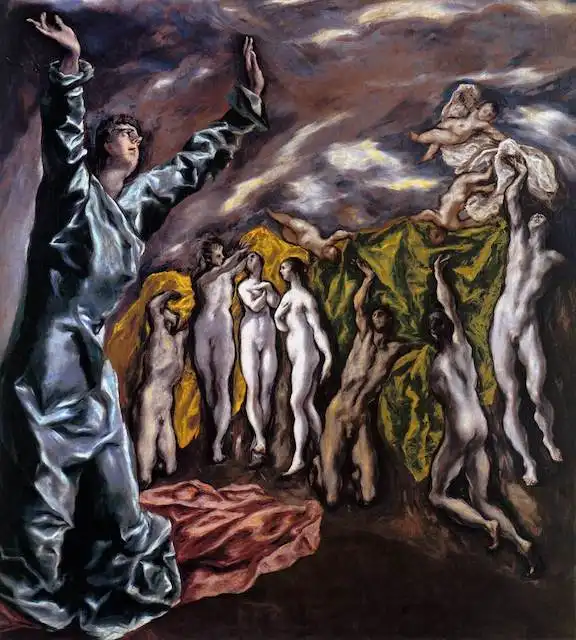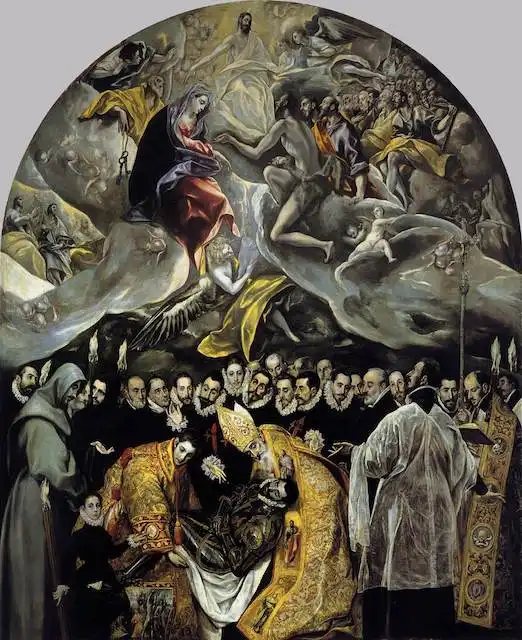The Unorthodox Paintings of El Greco.
One of my favorite areas in the Metropolitan Museum of Art is the European Painting galleries. In particular I love the unorthodox paintings of El Greco. In through the main entrance, up the stairs, through the glass double doors and turn left. violà! I was in shock and denial last time I visited as the galleries were closed for upgrades and rearranging of the collection. Before this interruption (necessary?) when I did manage to see these paintings grouped together in a few joyously empty galleries for the first time, I wasn’t expecting the effect they had on me.
Outlier
His painting is deceptive and looks like it doesn’t belong to it’s time. El Greco is an obvious outlier. The obsessiveness with proportion of the human form is not there. The reverence to the religious subject matter is there, but not overwhelmingly so. El Greco’s focus is also on the act of painting. At times there are parts of the paintings that look naive but on second look you can see the paint is dexterously applied. An artist ahead of his time but also rooted in the Baroque: Great swirling masses of negative spaces that are interspersed with intricate detailed figurative work.
Source of Light
There is a source of dark rather than a source of light in his paintings. A light that hits in an almost unnatural way, like a detective’s flashlight uncovering some hidden scene. Dark grey, nearly black clouds with tinges of warm and cool colors applied throughout the compositions. Reminiscent of watching a 3D movie without wearing the special glasses, you’ll see those static tinges of color in his paintings.
Wild Energy
Take The Opening of the Fifth Seal – the light enveloping the draped robes of primary colors, these colors made all the more intense by the greyish low saturation and almost unnatural tones of the figures. Figures looking skyward, arms outstretched with tumultuous skies almost in the throws of an apocalyptically induced electrical storm. El Greco’s paintings are wild compositions flowing with a circular energy which all seem incongruous to a display of piety.

Compositional Master
The Burial of the Count of Orgaz is a master class in baroque composition. For example, the picture broken by a band of the count’s mourning contemporaries, lace collars intact, respecting the golden mean. Pick any point in that altarpiece and your eye will drift to the apex of the arch. You are complicit in the meandering of the spirit of the Count of Orgaz on his journey upwards toward heaven.

Evolutionary
El Greco’s work is one of those bridges in the evolution of painting with his application of paint described by some as a Mannerist. His paintings contain an unassailable original style. For me, these are the paintings where the religious world collides with the quantum force of inter-dimensional physics. There is a crack in the time space continuum and El Greco is left to render it all in pigments and oil as best as possible with the patronage and tools of the day. We are left with that residual radiation emanating outward.
Our Free Monthly Newsletter
Sign up and receive our free color Guide: Oil Painters Classic Palette. You’ll get early access to special offers and our interesting monthly digest straight to your inbox. Privacy PolicyFearless
Being that El Greco is so original, he is that painter whom I wonder what he would have produced if he was propelled 300 years into the future to grapple with modernism. There is a human quality to his painting, as if the subjects were local actors doing a job on an Abel Ferrara film set.
You don’t need an abundance of colors, just the willingness to master the ones you do have. You need a fearlessness to recognize and embrace your own style. Try to explore compositional elements and focus on what is important to the overall spirit of the work.
